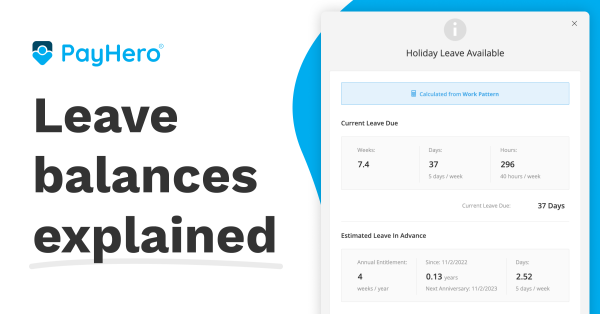Holidays Act
"Why Does My Leave Balance Keep Changing?" - Leave Balances Explained
April 19, 2022
If you’re an employee wondering why your leave balance keeps changing in PayHero, you’ve come to the right place.
We’d highly recommend reading this whole article for context, but here’s the following article summed up in a few sentences:
PayHero’s leave balance calculations are all based upon the 2003 Holidays Act. It is affected by your work pattern, anniversary date, any leave you have taken, and the company review period. When your work pattern changes, you’re still entitled to four weeks of annual leave, but the equivalent amount of days and hours will either increase or decrease depending on the hours you work.
Now, let’s get into the nitty-gritty…
Once you’ve logged into your PayHero account via the mobile app or in a web browser, you can access your leave balances in the Leave tab.

Here, you can click on the information icon and see a full breakdown.
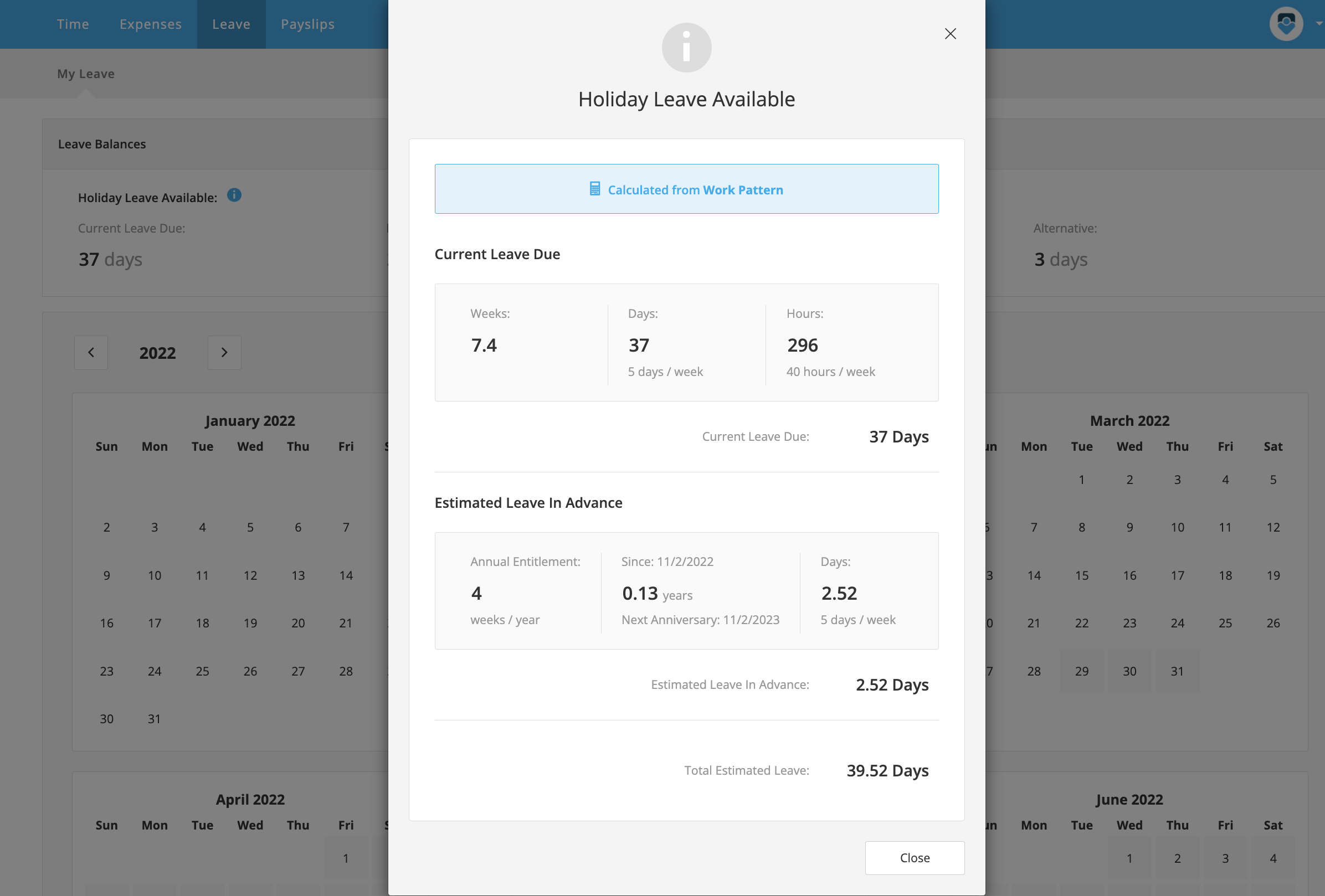
Let’s take a look at what each balance means.
Firstly, PayHero shows how much leave you are owed in weeks. The reason we do this is to stay compliant with the Holidays Act, so you get paid right.
What the balance in Weeks is ‘equivalent’ to in the Days and Hours sections will depend on your Work Pattern (how much you typically work each week) or the Company’s Review Period (eight weeks is the default review period in PayHero).
Your Days and Hours balances may fluctuate if you work variable hours, but your Weeks balance will stay the same. More on this later.
Your weeks won’t change until you take annual leave or become entitled to more.
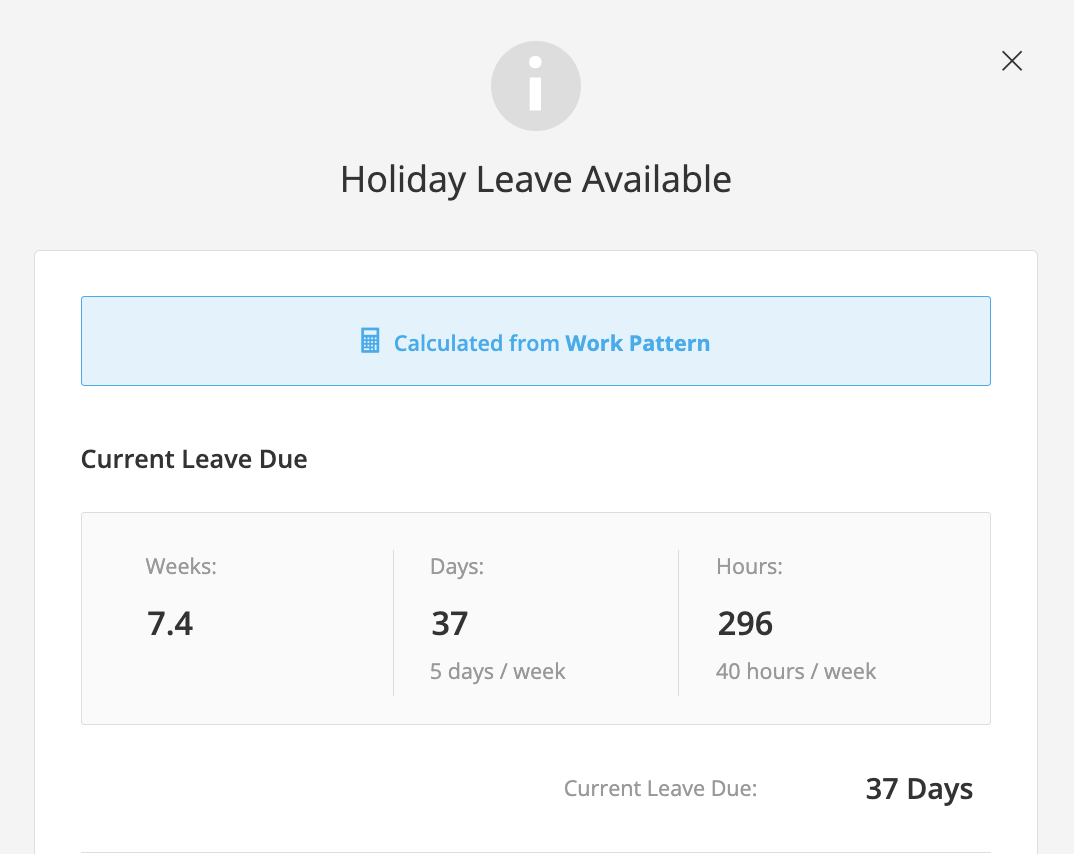
What about the Estimated Leave in Advance?
This balance isn’t an amount that you’re currently entitled to, it’s an estimate used by your employer to determine what annual leave in advance you might be able to use before your next employment anniversary.
All employees are entitled to four weeks of annual leave every time they cross an anniversary. In between anniversaries, the estimated leave gives you an idea of how much leave your employer might let you take if they allow leave in advance.
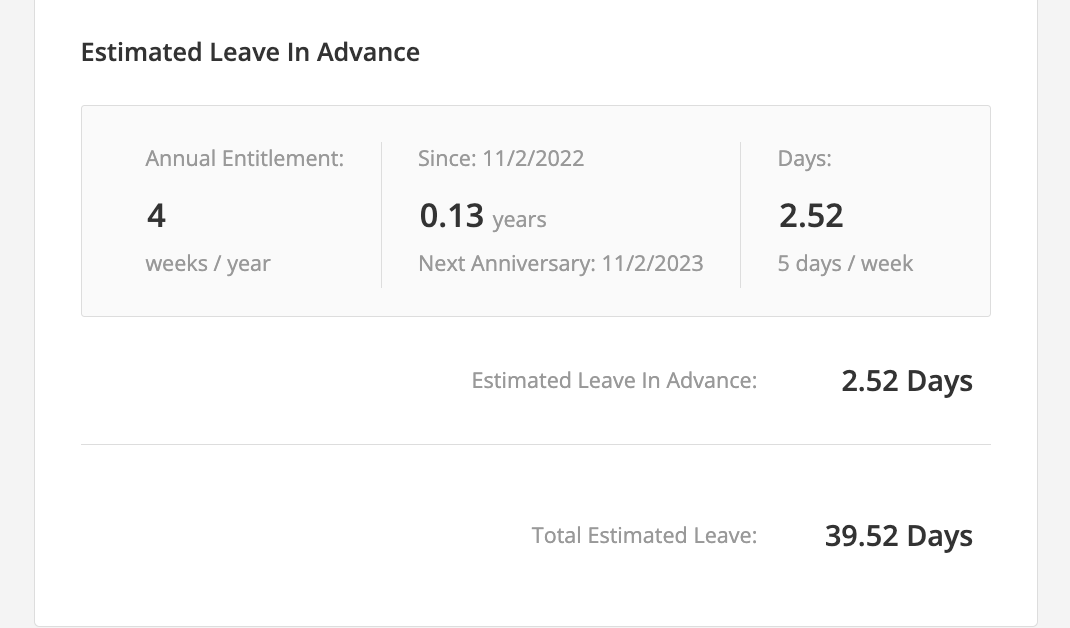
This employee celebrated their anniversary recently, which is why they only have 2.52 days of estimated leave in advance.
However, because they have 37 days of current leave due, their total estimated leave is 39.52 days.
P.S. You might notice that your Total Estimated Leave looks the same even when you're viewing older payslips. This is because Estimated Leave in Advance is calculated using the current date, not the date of the pay.
But why does your leave balance keep changing?
As you can see, there are several factors that go into your leave balance changing, including your work pattern and anniversary date, plus the company review period.
But the change you might be most concerned about is when the days and hours balance suddenly looks different, but the week's balance is the same. This occurs when your work pattern changes and is simply a side effect of how the Holidays Act outlines Annual Leave entitlements are to be managed. Here’s an example:
If an employee crosses their employment anniversary while working 5 days per week, they become entitled to 4 weeks of Annual leave and that would be equivalent to 20 days, based on their work pattern at that time. If they don't take any leave, yet change their employment basis to only work 2 days per week, while they still have 4 weeks of Annual Leave due to them, if they were to take that leave it would be equivalent to 8 days worth.
This balance is always based upon your work pattern at the time leave is taken. The way that PayHero handles this is outlined further in the support articles below:
Annual Leave & Holiday Pay in PayHero
How Annual Leave and Holiday Pay Work
There is also more information available on the Holidays Act Guidance Document available here: MBIE - Holidays Act 2003. Here are some of the applicable sections below.
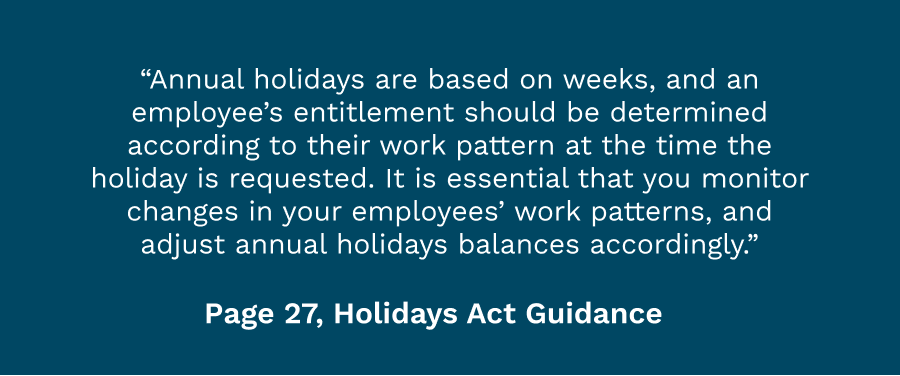
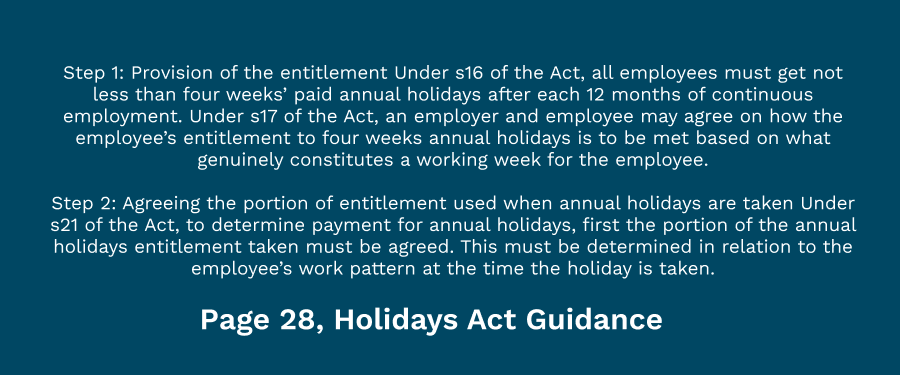
In addition to the above, there is a useful example they provide on page 31 under the "Accruing annual holidays" section demonstrating how this looks in practice.
What will you get paid?
If your leave balance changes because you have a new work pattern, it's likely the dollar value of your leave has also changed. For example, if you're working more days each week, the dollar value of your leave balance increases. It's easiest to look at the current weeks due and then multiply by what you have recently been paid each week.
It also works the other way around - if you work fewer days each week, the dollar value of annual leave drops, however, because the weekly rate for annual leave is the higher of the averages over the last 52 weeks or the last 4 weeks, it takes a lot longer for the weekly rate to drop than it does to increase. Read more about how these rates are calculated in our Annual Leave Rates support article.
If you have any more questions about your annual leave entitlements or leave balances, check out more employee support articles or chat with your employer.




